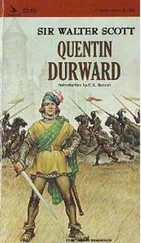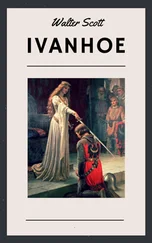Walter Scott - Letters on Demonology and Witchcraft
Здесь есть возможность читать онлайн «Walter Scott - Letters on Demonology and Witchcraft» весь текст электронной книги совершенно бесплатно (целиком полную версию без сокращений). В некоторых случаях можно слушать аудио, скачать через торрент в формате fb2 и присутствует краткое содержание. Жанр: История, на английском языке. Описание произведения, (предисловие) а так же отзывы посетителей доступны на портале библиотеки ЛибКат.
- Название:Letters on Demonology and Witchcraft
- Автор:
- Жанр:
- Год:неизвестен
- ISBN:нет данных
- Рейтинг книги:4 / 5. Голосов: 1
-
Избранное:Добавить в избранное
- Отзывы:
-
Ваша оценка:
- 80
- 1
- 2
- 3
- 4
- 5
Letters on Demonology and Witchcraft: краткое содержание, описание и аннотация
Предлагаем к чтению аннотацию, описание, краткое содержание или предисловие (зависит от того, что написал сам автор книги «Letters on Demonology and Witchcraft»). Если вы не нашли необходимую информацию о книге — напишите в комментариях, мы постараемся отыскать её.
Letters on Demonology and Witchcraft — читать онлайн бесплатно полную книгу (весь текст) целиком
Ниже представлен текст книги, разбитый по страницам. Система сохранения места последней прочитанной страницы, позволяет с удобством читать онлайн бесплатно книгу «Letters on Demonology and Witchcraft», без необходимости каждый раз заново искать на чём Вы остановились. Поставьте закладку, и сможете в любой момент перейти на страницу, на которой закончили чтение.
Интервал:
Закладка:
The Scottish prelatists, upon whom the Covenanters used to throw many aspersions respecting their receiving proof against shot from the devil, and other infernal practices, rejoiced to have an opportunity, in their turn, to retort on their adversaries the charge of sorcery. Dr. Hickes, the author of "Thesaurus Septentrionalis," published on the subject of Major Weir, and the case of Mitchell, who fired at the Archbishop of St. Andrews his book called "Ravaillac Redivivus," written with the unjust purpose of attaching to the religious sect to which the wizard and assassin belonged the charge of having fostered and encouraged the crimes they committed or attempted.
It is certain that no story of witchcraft or necromancy, so many of which occurred near and in Edinburgh, made such a lasting impression on the public mind as that of Major Weir. The remains of the house in which he and his sister lived are still shown at the head of the West Bow, which has a gloomy aspect, well suited for a necromancer. It was at different times a brazier's shop and a magazine for lint, and in my younger days was employed for the latter use; but no family would inhabit the haunted walls as a residence; and bold was the urchin from the High School who dared approach the gloomy ruin at the risk of seeing the Major's enchanted staff parading through the old apartments, or hearing the hum of the necromantic wheel, which procured for his sister such a character as a spinner. At the time I am writing this last fortress of superstitious renown is in the course of being destroyed, in order to the modern improvements now carrying on in a quarter long thought unimprovable.
As knowledge and learning began to increase, the gentlemen and clergy of Scotland became ashamed of the credulity of their ancestors, and witch trials, although not discontinued, more seldom disgrace our records of criminal jurisprudence.
Sir John Clerk, a scholar and an antiquary, the grandfather of the late celebrated John Clerk of Eldin, had the honour to be amongst the first to decline acting as a commissioner on the trial of a witch, to which he was appointed so early as 1678, [81] [81] See Fountainhall's "Decisions," vol. i. p. 15.
alleging, drily, that he did not feel himself warlock (that is, conjurer) sufficient to be a judge upon such an inquisition. Allan Ramsay, his friend, and who must be supposed to speak the sense of his many respectable patrons, had delivered his opinion on the subject in the "Gentle Shepherd," where Mause's imaginary witchcraft constitutes the machinery of the poem.
Yet these dawnings of sense and humanity were obscured by the clouds of the ancient superstition on more than one distinguished occasion. In 1676, Sir George Maxwell, of Pollock, apparently a man of melancholic and valetudinary habits, believed himself bewitched to death by six witches, one man and five women, who were leagued for the purpose of tormenting a clay image in his likeness. The chief evidence on the subject was a vagabond girl, pretending to be deaf and dumb. But as her imposture was afterwards discovered and herself punished, it is reasonably to be concluded that she had herself formed the picture or image of Sir George, and had hid it where it was afterwards found in consequence of her own information. In the meantime, five of the accused were executed, and the sixth only escaped on account of extreme youth.
A still more remarkable case occurred at Paisley in 1697, where a young girl, about eleven years of age, daughter of John Shaw, of Bargarran, was the principal evidence. This unlucky damsel, beginning her practices out of a quarrel with a maid-servant, continued to imitate a case of possession so accurately that no less than twenty persons were condemned upon her evidence, of whom five were executed, besides one John Reed, who hanged himself in prison, or, as was charitably said, was strangled by the devil in person, lest he should make disclosures to the detriment of the service. But even those who believed in witchcraft were now beginning to open their eyes to the dangers in the present mode of prosecution. "I own," says the Rev. Mr. Bell in his MS. "Treatise on Witchcraft," "there has been much harm done to worthy and innocent persons in the common way of finding out witches, and in the means made use of for promoting the discovery of such wretches and bringing them to justice; so that oftentimes old age, poverty, features, and ill-fame, with such like grounds not worthy to be represented to a magistrate, have yet moved many to suspect and defame their neighbours, to the unspeakable prejudice of Christian charity; a late instance whereof we had in the west, in the business of the sorceries exercised upon the Laird of Bargarran's daughter, anno 1697—a time when persons of more goodness and esteem than most of their calumniators were defamed for witches, and which was occasioned mostly by the forwardness and absurd credulity of diverse otherwise worthy ministers of the gospel, and some topping professors in and about the city of Glasgow." [82] [82] Law's "Memorialls," edited by C.K. Sliarpe, Esq.: Prefatory Notice, p. 93.
Those who doubted of the sense of the law or reasonableness of the practice in such cases, began to take courage and state their objections boldly. In the year 1704 a frightful instance of popular bigotry occurred at Pittenweem. A strolling vagabond, who affected fits, laid an accusation of witchcraft against two women, who were accordingly seized on, and imprisoned with the usual severities. One of the unhappy creatures, Janet Cornfoot by name, escaped from prison, but was unhappily caught, and brought back to Pittenweem, where she fell into the hands of a ferocious mob, consisting of rude seamen and fishers. The magistrates made no attempts for her rescue, and the crowd exercised their brutal pleasure on the poor old woman, pelted her with stones, swung her suspended on a rope betwixt a ship and the shore, and finally ended her miserable existence by throwing a door over her as she lay exhausted on the beach, and heaping stones upon it till she was pressed to death. As even the existing laws against witchcraft were transgressed by this brutal riot, a warm attack was made upon the magistrates and ministers of the town by those who were shocked at a tragedy of such a horrible cast, There were answers published, in which the parties assailed were zealously defended. The superior authorities were expected to take up the affair, but it so happened; during the general distraction of the country concerning the Union, that the murder went without the investigation which a crime so horrid demanded. Still, however, it was something gained that the cruelty was exposed to the public. The voice of general opinion was now appealed to, and in the long run the sentiments which it advocates are commonly those of good sense and humanity.
The officers in the higher branches of the law dared now assert their official authority and reserve for their own decision cases of supposed witchcraft which the fear of public clamour had induced them formerly to leave in the hands of inferior judges, operated upon by all the prejudices of the country and the populace.
In 1718, the celebrated lawyer, Robert Dundas of Arniston, then King's Advocate, wrote a severe letter of censure to the Sheriff-depute of Caithness, in the first place, as having neglected to communicate officially certain precognitions which he had led respecting some recent practices of witchcraft in his county. The Advocate reminded this local judge that the duty of inferior magistrates, in such cases, was to advise with the King's Counsel, first, whether they should be made subject of a trial or not; and if so, before what court, and in what manner, it should take place. He also called the magistrate's attention to a report, that he, the Sheriff-depute, intended to judge in the case himself; "a thing of too great difficulty to be tried without very deliberate advice, and beyond the jurisdiction of an inferior court." The Sheriff-depute sends, with his apology, the precognition [83] [83] The precognition is the record of the preliminary evidence on which the public officers charged in Scotland with duties entrusted to a grand jury in England, incur the responsibility of sending an accused person to trial.
of the affair, which is one of the most nonsensical in this nonsensical department of the law. A certain carpenter, named William Montgomery, was so infested with cats, which, as his servant-maid reported, "spoke among themselves," that he fell in a rage upon a party of these animals which had assembled in his house at irregular hours, and betwixt his Highland arms of knife, dirk, and broadsword, and his professional weapon of an axe, he made such a dispersion that they were quiet for the night. In consequence of his blows, two witches were said to have died. The case of a third, named Nin-Gilbert, was still more remarkable. Her leg being broken, the injured limb withered, pined, and finally fell off; on which the hag was enclosed in prison, where she also died; and the question which remained was, whether any process should be directed against persons whom, in her compelled confession, she had, as usual, informed against. The Lord Advocate, as may be supposed, quashed all further procedure.
Интервал:
Закладка:
Похожие книги на «Letters on Demonology and Witchcraft»
Представляем Вашему вниманию похожие книги на «Letters on Demonology and Witchcraft» списком для выбора. Мы отобрали схожую по названию и смыслу литературу в надежде предоставить читателям больше вариантов отыскать новые, интересные, ещё непрочитанные произведения.
Обсуждение, отзывы о книге «Letters on Demonology and Witchcraft» и просто собственные мнения читателей. Оставьте ваши комментарии, напишите, что Вы думаете о произведении, его смысле или главных героях. Укажите что конкретно понравилось, а что нет, и почему Вы так считаете.









